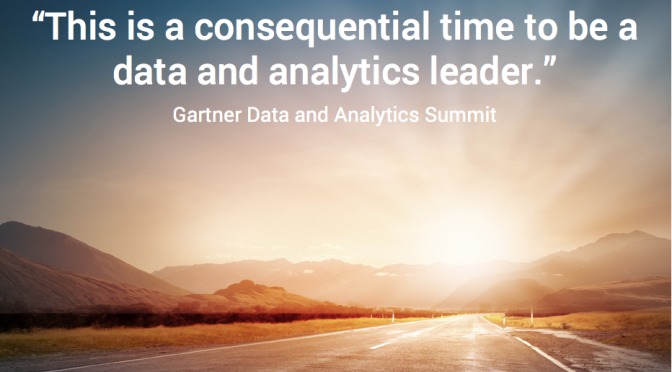Want to Operationalize Analytics? Here’s Where to Start
Blog: Enterprise Decision Management Blog

Thoughts From Gartner’s Data and Analytics Summit
This week I was at Gartner’s Data and Analytics Summit in Grapevine Texas, with my FICO team. This is an event we never miss, it’s attended by thousands of experts, analysts, data scientists and analytics leaders.
This year’s Summit was dominated by presentations and conversations about data, analytics, explainable artificial intelligence (AI), and machine learning; nearly every discussion came to the same point — we want to use data and technology to gain competitive advantage and deliver real business value, but how? There was a wide variety of opinions, Gartner asserted that “to accomplish this feat, data and analytic leaders must master four key dimensions of scale: diversity, literacy, complexity, and trust.”
In many of my conversations at the Summit, I shared my own view of what it takes to operationalize analytics. By this I mean, take all of the data and insights gleaned from advanced analytics and connect those to day-to-day operations. Surprisingly, the first two steps really have nothing to do with technology.
What it takes to operationalize analytics
First, companies need to start by putting the decision before the data. With a decision-first strategy you define the business objective, then determine what data and analytics you need to achieve the goal. If the modeling and data analytics requirements are defined by the business outcome first, data exploration and analytic development is faster and more productive. This helps enterprises narrow in on meaningful outcomes, shutting out extraneous noise to focus on the insights that address specific objectives.
Then, enterprises need to get data science into the hands of business decision makers. Empower the business leaders with the ability to evaluate the complete spectrum of potential opportunities. Experience has shown that, when business experts have access to the data, insight, and the tools to exploit analytics, they can visualize relationships between different variables and actions to quickly identify the preferred outcomes for maximum impact.
Rita Sallam, the conference chair and VP at Gartner, opened the event with a telling statement, “This is a consequential time to be a data and analytics leader.” I couldn’t agree more; leading a digital transformation is no small task. But if you start with the business challenge, then look at the analytics and arm business leaders with access, you will at least be headed in the right direction.
The post Want to Operationalize Analytics? Here’s Where to Start appeared first on FICO.
Leave a Comment
You must be logged in to post a comment.







